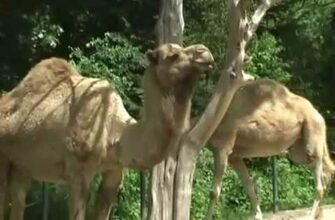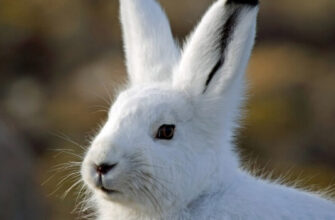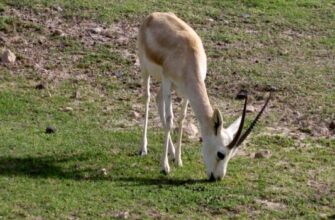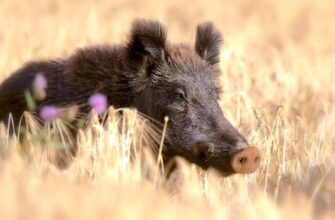Russian muskrat, also known as khokhulya (Desmana moschata) is a very old, relic species of mammals. It is believed that these animals have been living on Earth for about 30 million years. Previously, the distribution area extended to almost the entire European part of Eurasia – up to the British Isles. Now the range has decreased and has a broken character.
Desman owes its name to its characteristic and very unpleasant smell of musk. The etymology of the name goes back to the old Russian word “huhat”, i.e. “stink”.
Species origin and description
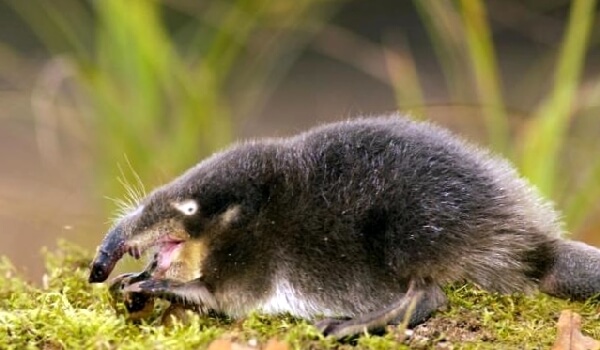
Due to the antiquity of the species, it is a very difficult task to accurately determine its origin. The ancestors of the desman were small insectivorous animals, which, in the process of specialization, acquired the appearance and habits close to modern animals. For 30 million years, evolution has not been able to greatly change the muskrat, so today we see it the same as mammoths and almost all the ancestors of modern man could see it. Close relatives of the Russian desman are modern moles, with which desmans have many similar features in anatomy and biology.
The desman prefers to settle along quiet water bodies in burrows that she digs herself. The dwellings are highly branched and go to the very edge of the water. The muskrat spends most of its time in burrows, hiding from its enemies, incl. from a person. The animal can swim perfectly, has an excellent sense of smell and touch. The small body is covered with thick hair, which the animal processes with the secretions of the musk gland. Due to this, the wool becomes water-repellent, but at the same time gives the muskrat a strong unpleasant odor.
The khokhul feeds on small crustaceans, mollusks, insects and aquatic plants. The animal does not make reserves for the winter and does not hibernate, leading an active lifestyle all year round. Because of this feature, the muskrat cannot expand its range to the north – it is difficult for the animal to endure cold winters.
Appearance and features
The desman is small in size – only about 20 cm, plus a tail of about the same length. Total – about 40 centimeters. Body weight is approximately 400 — 500 grams. The head is small, on a short neck, with an elongated muzzle ending in a mobile stigma with a nose and tufts of very sensitive whiskers — vibrissa. Small eyes are surrounded by lighter, hairless areas of skin; vision is very poor. In everyday life, the desman relies more on other senses than on sight. And during the hunt, in general, he closes his eyes and uses exclusively vibrissae.
The tail of the muskrat is long, very mobile, flattened laterally. It is covered with small scales and has no wool at all. It is used by the animal when swimming as an additional mover and rudder. The limbs of the muskrat are short. Between the toes of the paws there are membranes, which also facilitates swimming. The front paws are short, clubfoot, mobile, with large claws. They desman digs multi-meter networks of holes. On land, these mammals move slowly and clumsily, swimming much faster and more agile in the water.
The body of the animal is covered with thick fur soaked in musk. Musk performs a water-repellent function. Thanks to this, the wool does not get wet and dries very quickly. The color of the coat on the back is gray-brown, the belly is gray-silver. This coloring performs a masking function both in water and on land. In fact, it was precisely because of musk and skin with fur that the number of desman was reduced to catastrophic proportions. For many centuries, the animal had commercial value, first because of musk, and then as a fur breed. The final ban on fishing was introduced only in the middle of the 20th century.
Where does the Russian muskrat live?
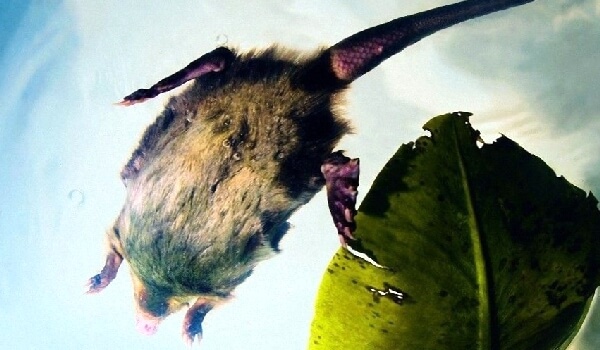
To date, the Russian desman is distributed in small areas of the Volga, Don, Dnieper and Ural river basins. Now the area continues to shrink. This is due to both climate change and human activity.
The muskrat leads a very secretive life. It lives near quiet reservoirs, in the banks of which it digs branched burrows. In some cases, the total length of all tunnels and burrow chambers can exceed 10 meters! In its dungeons, the animal rests after hunting, feeds, and raises offspring. Khokhulya prefers to settle in quiet places with lush coastal vegetation. On such shores, it is easier for the animal to hide from danger, and it is also easier to survive periods of high water. If a reservoir is characterized by frequent strong changes in water level, then the muskrat makes multi-tiered burrows with several entrances.
The animal tries to make the entrance to the hole at the very edge of the water. A groove runs along the bottom from the entrance to the dwelling, often with several branches. This is a kind of underwater path that allows the desman not to get lost and quickly find the right path. Often grooves connect the main burrow with additional — fodder, in which the little animal can safely eat, relax or just breathe in fresh air. The distance between the holes does not exceed 25-30 meters, because. about as many desmans can swim under water in one breath. As the water level drops, the muskrat deepens the grooves near the entrance to the hole and continues to use them.
Floods are a very difficult time for a muskrat. She has to leave her hole and wait for the rise of water in some kind of temporary shelters. At this time, the animals are especially vulnerable and often become the prey of predators. If it is not possible to gain a foothold, the animal is carried away by the current. Not all individuals survive. But this is also how the muskrat spreads.
What does the Russian desman eat?
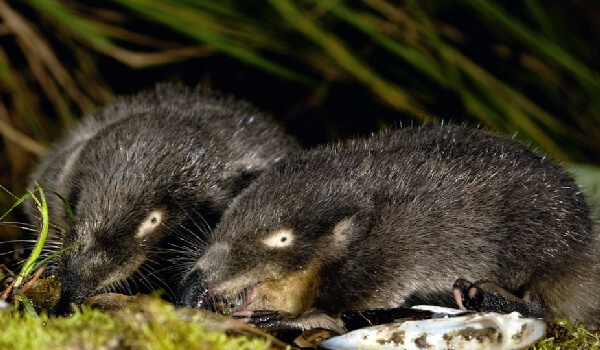
With great mobility and a high metabolism, the Russian muskrat needs a lot of high-calorie food. Such activity is maintained almost throughout the year. The basis of the diet of the Russian muskrat is animal food, although the animal does not disdain aquatic vegetation.
Most often, the muskrat menu includes:
- aquatic insects;
- insect larvae;
- small crustaceans;
- mollusks;
- leeches and other worms.
In addition, an animal with enjoys feasting on small fish and frogs, if you manage to catch them. Periodically supplements its diet with stalks of cattail, reed, egg-pods.
The khokhul hunts exclusively in the water, and eats prey on land. During the hunt, the animal orients itself with the help of vibrissae. Having found the prey, it seizes it with its teeth and takes it to a hole or a secluded place on the shore, where it regales itself. In addition to soft insect larvae, the muskrat also copes well with mollusks in shells thanks to strong and sharp front teeth. Since the “dining room” of the desman is located in the same place, it is not difficult to find the habitat of this secretive animal from the remnants of food.
An important role in the process of hunting Russian muskrat is played by grooves at the bottom of the reservoir. Constantly moving along them, the animal provides periodic circulation of water and its enrichment with air. Aquatic insects and their larvae swim more actively in oxygen-rich water, on which the khokhul hunts.
Peculiarities of character and lifestyle
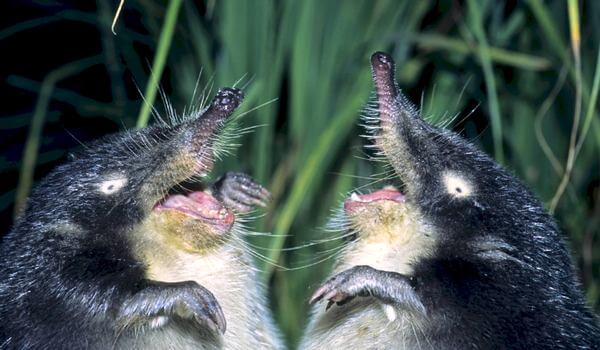
The Russian muskrat is a semi-aquatic mammal that breathes atmospheric air. But the way of life left its mark and this ancient animal developed several adaptations for such a habitat. The main ones are the ability to swim under water and hold your breath for a long time. If the animal feels danger above the water, and you need to inhale, then the muskrat carefully sticks out its stigma with nostrils above the surface of the water and breathes. This continues until the danger disappears.
Despite the fact that the Khokhulya has good hearing, it does not respond to all sound stimuli. It has been repeatedly noted that human speech or the noise of cattle on the shore sometimes does not have such an effect as a slight splash or rustle of grass on the shore. Nevertheless, the muskrat tries to stay secretive and hides at the slightest danger.
The Russian muskrat usually lives in family groups. One family owns one developed network of holes, in which all individuals coexist amicably. But these animals cannot be called peaceful and docile! Often, conflicts arise between representatives of different families, which can even lead to the death of one of the individuals. But this rarely happens. Usually the case ends with a peaceful showdown or intimidation. Attacks are more often observed from adult animals on young animals from a neighboring clan.
With aquatic and semi-aquatic animals of other species, the Russian muskrat tries to maintain friendly relations. So, even some semblance of symbiosis is observed with a beaver. Khokhulya often uses beaver burrows for her own purposes, and as a payment she devours mollusks that can carry beaver pathogens. Thus, both win. There is no food competition with beavers in the Russian muskrat.
With another aquatic mammal, the muskrat, the desman develops diverse relationships. Animals do not enter into direct confrontation and even sometimes occupy one hole, however, it is not uncommon for a larger muskrat to crowd out a weak animal. This leads to a reduction in the number of muskrat in some areas.
Social structure and reproduction
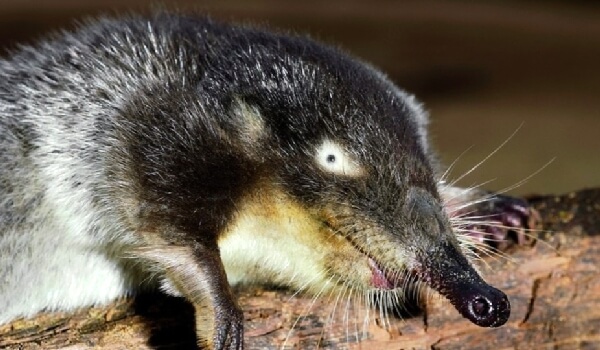
As noted above, the Russian muskrat lives in family groups consisting of parents and the last generation of young. Sometimes, at a high density of animals, unrelated individuals or older cubs join the family. Each muskrat family lives in its own burrow and controls the space around it. When meeting with representatives of neighboring clans, conflicts may arise.
Russian desman breeds up to two times a year. Usually in spring (during high water) and late autumn. Pregnancy in a female lasts about 1.5 months. All this time, she prepares one of the chambers in the hole, in which she then gives birth and feeds offspring. Khokhuly has up to five cubs in one litter. They are born naked, defenseless and helpless, weighing only 3-5 grams. The mother in the first two weeks relentlessly cares for the offspring, feeding with milk, warming and licking. Later, the mother begins to leave the cell to rest for a short time. The protection of the family and the care of the female during this period is carried out by the male.
If the female is disturbed during the period of feeding the offspring, then most often she transfers the offspring to another chamber or even to another hole. The mother moves the cubs along the water, placing them on her stomach. A worried father is usually the first to leave the hole.
For the first month, the mother feeds the cubs exclusively with milk. At the age of one month, babies appear teeth and they begin to try adult food. From about a month and a half, young desmans begin to leave the hole and try to get food on their own. By the age of six months, they are already completely independent, and by 11 months they become sexually mature and leave the parent hole.
Natural enemies of the Russian muskrat
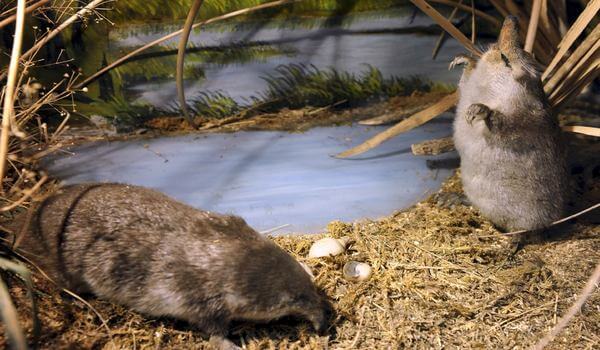
Though desman and leads a very secretive and cautious lifestyle, she has plenty of enemies in the wild! Having a very small size, this animal often becomes the prey of predators.
The main enemies on land:
- foxes;
- otters;
- ferrets;
- wild felines;
- some birds of prey.
Usually a furry animal becomes a victim on land, because. legs are poorly adapted to moving on land. The most dangerous time in this respect is the spring flood. And just at this time there is a marriage period. Animals engaged in the selection of a pair lose their vigilance, and the overflowing reservoir deprives them of their natural shelter – holes. Therefore, desmans become easy prey for predators. Also, wild boars cause significant harm, which, although they do not hunt adults, often break their holes.
In the water, the khokhul is more agile and less prone to attack, but even here it is not completely safe. A small animal can become prey for a large pike or catfish. Another serious enemy of the desman was man and his activities. For centuries he has been exterminating animals for fur and musk. But if now the commercial hunting of the khokhul is prohibited and it is under protection, then the destruction of its natural habitat continues to reduce the number of these ancient animals.
Population and species status
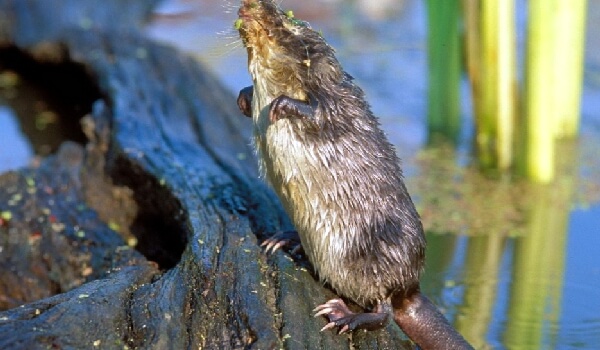
Once upon a time, several centuries ago, the Russian muskrat lived almost throughout Europe and its numbers were at a safe level. But over the past 100-150 years, the range of this relic mammal has significantly decreased and become fragmented. Now the khokhul can occasionally be found in some areas of the Volga, Don, Ural and Dnieper basins. Rare sightings of the desman were also noted in the Chelyabinsk and Tomsk regions.
Due to the secretive way of life, counting the number of the animal causes a number of difficulties, so at the moment their exact number is unknown. But a number of researchers believe that the desman population today has, according to various sources, about 30-40 thousand individuals. This is a negligible number compared to the previous population, when tens of thousands of skins of this animal were brought to fairs every year, but it leaves hope for the survival of the species.
Protection of the Russian muskrat
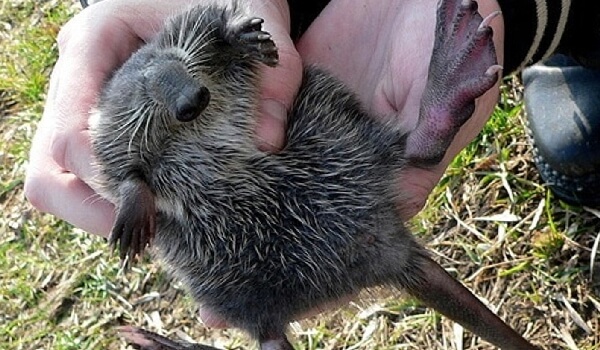
Now Russian muskrat — it is a rare relic declining species. It is on the verge of extinction and is listed in the Red Book of Russia, and is also protected by some international organizations. To protect the muskrat in Russia and in the territories of neighboring states, several reserves and about 80 sanctuaries have been created, in which the animals are protected and studied.
Since the end of the 20s of the XX century, programs for the resettlement of Russian desmans have been periodically implemented in the USSR, as well as in modern Russia. As a result of these activities, for example, populations appeared and exist in the Ob basin. There, its number, according to approximate estimates, is about 2.5 thousand animals. But many attempts were unsuccessful, because. this ancient species is still poorly studied.
Despite the status of an endangered species, the muskrat is still of interest as a commercial fur animal and still becomes the target of poachers. Fishing nets are no less dangerous, in which a huge number of animals die. This factor also prevents the restoration of the muskrat population.
The Russian muskrat is one of the oldest representatives of the animal world on our planet. These animals have seen mammoths, seen almost all stages of human development, have survived not a single global catastrophe, but may become extinct in the coming decades due to human activity. To prevent this from happening, the muskrat must be protected and protected. The restoration of the population of this relic species is not possible without the preservation and restoration of the natural habitat of these wonderful furry animals.

